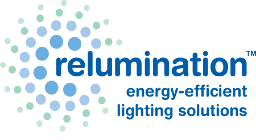Proper indoor lighting is crucial in businesses that specialize in senior care. The natural decline in eye function with age means that people in their 60s need three times as much light to effectively complete tasks as those in their 20s. It might seem like the answer is flooding the building with bright lights, but this isn’t effective. While certain eye conditions associated with age cause difficulty seeing in dim light, others create a sensitivity to glare and light changes. Proper placement of adjustable lights in hospitals and senior living facilities enables the use of fewer lights with increased functionality.
Task Lighting
Lights with adjustable brightness and placement can be used to meet individual needs in many rooms. Living areas outfitted with adjustable lamps create effective spaces for reading or hobbies. Task lighting in the kitchen may include bright lights placed directly over cutting and cooking surfaces. Dimmer switches in these lights can be effective in eliminating glare. Instead of flooding bathrooms with bright light, carefully placed lighting around the sinks and mirrors can create the right environment for a safer shave.
Motion Sensors
It’s not unusual for seniors to suffer insomnia or need to get up during the night. Bathing a dark room in bright light can actually be counterproductive for aging eyes. While younger eyes may adjust in an instant, the pupils of seniors react slowly to changes in light. This problem can lead to potentially dangerous nighttime falls. Equipping bedrooms, hallways, and bathrooms with motion sensor night lights can provide sufficient light to reveal obstructions without adding blinding glare. Wireless motion-sensing lights can be stuck to walls close to the floor to provide adequate path lighting at night.
Increasing the amount of light is not always the answer for better visibility. Proper placement adds the right amount of light exactly where it is needed. Contact us at Relumination for more practical lighting tips to improve your business.




